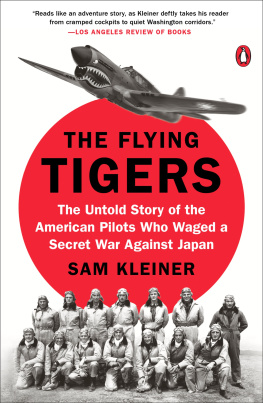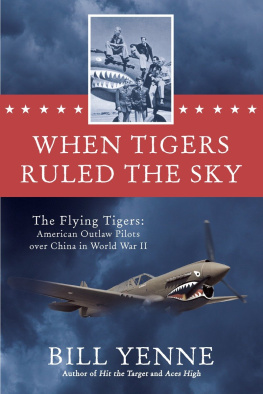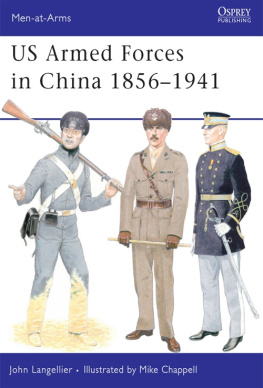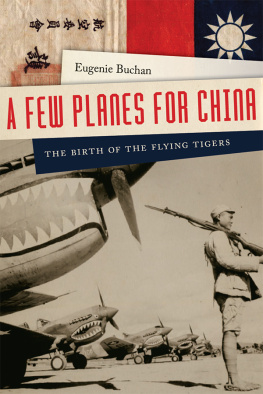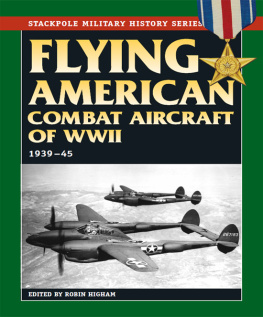Flying Tigers
Claire Chennault and
His American Volunteers,
1941-1942
UPDATED AND REVISED EDITION
Daniel Ford

For
KATHARINE FORD LAIRD AND HER DAUGHTERS,
three bright lights of my life
Contents
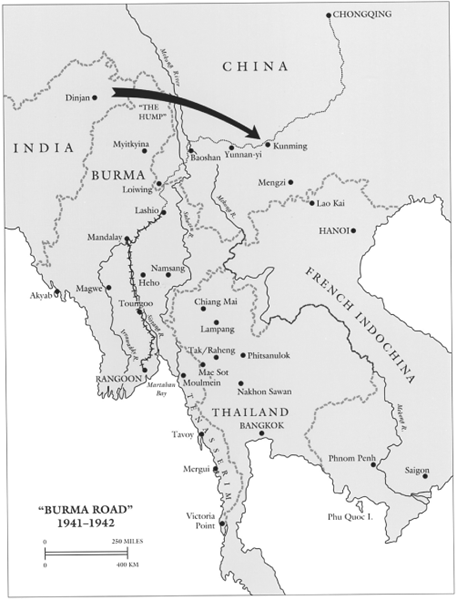
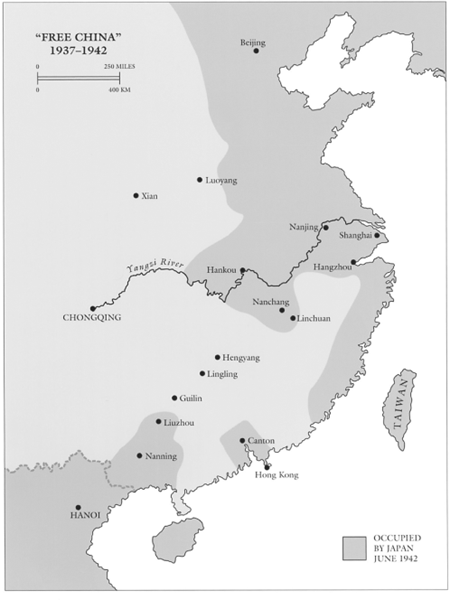
F or a scholarly look at events that happened a long time ago, Flying Tigers: Claire Chennault and the American Volunteer Group was met by an astonishing amount of flak when the Smithsonian Institution Press published it in 1991. Author, publisher, and even the grave old Institutionwe all found ourselves accused of having sold out to the Japanese.
Our sin, of course, was to bring the news that theres a discrepancy between Flying Tiger combat claims and the losses actually suffered by Japanese air units in Southeast Asia and southwestern China. In its simplest and most defensible version, the Flying Tiger legend holds that sixty-seven volunteers, flying obsolete planes with Chinese markings, destroyed almost three hundred Japanese aircraft in the air and on the ground, while losing only four men in air-to-air combat.
But wait! As its most often published, the legend goes on to say that the official tally includes only wrecks located on the ground or otherwise proven, and that the number must be doubled to account for planes that fell behind enemy lines or that lie forever uncounted in the rain forest or beneath the waters of Martaban Bay. And if you were lucky enough to get the Flying Tigers in an expansive mood, as I did for their 1989 reunion at Ojai, California, youd be assured that Claire Chennault went to Tokyo at the end of the war and learned in Japanese records that theyd lost one thousand planes to the men he commanded in Burma and China from December 1941 to July 1942. Indeed, the reunion program that year contained an even more cheerful version of the AVG legend, claiming 299 planes shot down by official count, plus another known 240 Japanese aircraft, plus upwards of a thousand aircraft which could not be confirmed officially. More than 1,500 aircraft!
There are three things wrong with these reckonings. First, Chennault didnt visit Japan after the war. Second, he couldnt have studied Japanese records, because they were in poor shape and he didnt know the language. And third, the Japanese Army Air Force went to war in Southeast Asia with fewer than 750 planeswith which it had to defeat the Flying Tigers and the Royal Air Force in Burma and China while also fighting (in concert with naval air forces) British Commonwealth squadrons in Malaya, Dutch squadrons on Java and Borneo, and U.S. and Filipino squadrons on Luzon. The JAAF couldnt have lost 1,000 or 1,500 aircraft to the AVG, because it didnt have that many to lose.
In fact, Japanese losses to the Flying Tigers amounted to 115, give or take a handfula finding that shouldnt surprise anyone. Every World War II air force, in every theater of war, came home believing it had inflicted far more damage on the enemy than it had actually accomplished. As a matter of fact, Japanese airmen in Southeast Asia put in claims far more spectacular than those of the Flying Tigerstypically five to one. At the other extreme, Royal Air Force pilots in the Battle of Britain, equipped with gun cameras and fighting over open fields and pastures, inflated their kills by a mere 56 percent.
How could it have been otherwise? Aerial combat in World War II was a struggle in three dimensions, with the hard-pressed pilot doing his best to dive away or lose himself in a cloud, and often with two or three attackers firing at him. Opponents closed on one another at speeds of up to 700 mph. Win or lose, if he had any sense at all, the pilot was frightened half out of his skin. The wonder isnt that he saw things wrongly, even to the point of attacking friendly forcesthe wonder is that it didnt happen more often. In the case of Allied squadrons in Burma and China, their difficulties were compounded by the fact that they often fought over enemy territory, or above the rain forest or open water, making wrecks impossible to find.
As for using Japanese sources, after more than half a century a writer shouldnt have to apologize for that. No such skepticism is shown toward German reports of their losses in the Battle of Britain, for example. And though I was the first to compare Flying Tiger combat reports to those of their opponents, I certainly wasnt the first to work with Japanese records. American researcher John Lundstrom made just such an analysis for U.S. Navy pilots in the opening months of the Pacific War. And the eminent British aviation writer Christopher Shores and his colleagues did it repeatedly for RAF pilots and their adversaries in Europe, North Africa, and the Pacific. (As a result of his findings, Shores was moved to write A Radical Reassessment for Air Classics magazine, urging his fellow aviation writers to stop using such formulations as X Squadron sent fifteen of the Zeros crashing to the ground, when all we really know is that X Squadron claimed that many planes. Ironically, the same magazine led the charge in attacking Flying Tigers as Japanese-sponsored revisionism.) But those books were met with less fury, probably because they involved a larger canvas, with many squadrons and hundreds of pilots. With the Flying Tigers, each Japanese plane that I traced back to its base in Thailand or Vietnam was a victory that might be subtracted from somebodys bonus account.
Then too, the U.S. military refused to recognize those combat victories when the Tigers rejoined the armed forces in the summer of 1942. Nor did it count their months with the Chinese Air Force as qualifying time for promotion, retirement, or veterans benefits. That snub remained a hot-button issue for Flying Tiger veterans for half a century, until it was partly remedied in the 1990s.
In any event, with a few good-hearted exceptions, the surviving Tigersthen numbering twenty pilots, plus eighty of the men and women whod supported them on the groundroundly condemned the book, as a defamation of Claire Chennault and the fighter group he readied for combat in the fall of 1941.
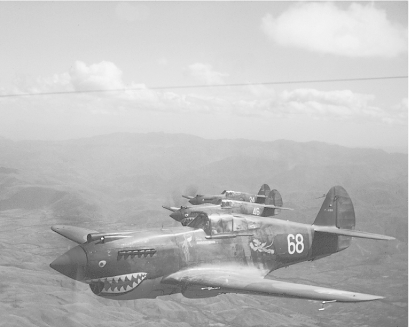
This iconic portrait of three American Volunteer Group fighter planes was taken from the cockpit of Tomahawk No. 77 by its pilot while on a combat patrol over Baoshan, near the China-Burma border, in April 1942. (R. T. Smith photo by permission of Brad Smith)
I dont agree. In my opinion, they emerge from the pages of this book as more genuine heroes than the cardboard cutouts of earlier romances, knocking down Zeros with such ease that we can only wonder: with supermen like these, why did the United States need four years, two atomic bombs, and a Russian invasion to defeat the Empire of the Sun? To point out that the Japanese army had a formidable air force, with maneuverable planes and skilled pilots, doesnt diminish the Flying Tigers. Quite the opposite, I should think.
The Japanese accounts are solid; theyre convincing; they have the kind of unambiguous detail that cant be faked. Indeed, Ill go further and say that in literally thousands of combat reportsJapanese, American, and BritishI found no important instance where a survivor seemed to be lying about what happened. The pilots were often mistaken, but they rarely lied.
Next page

